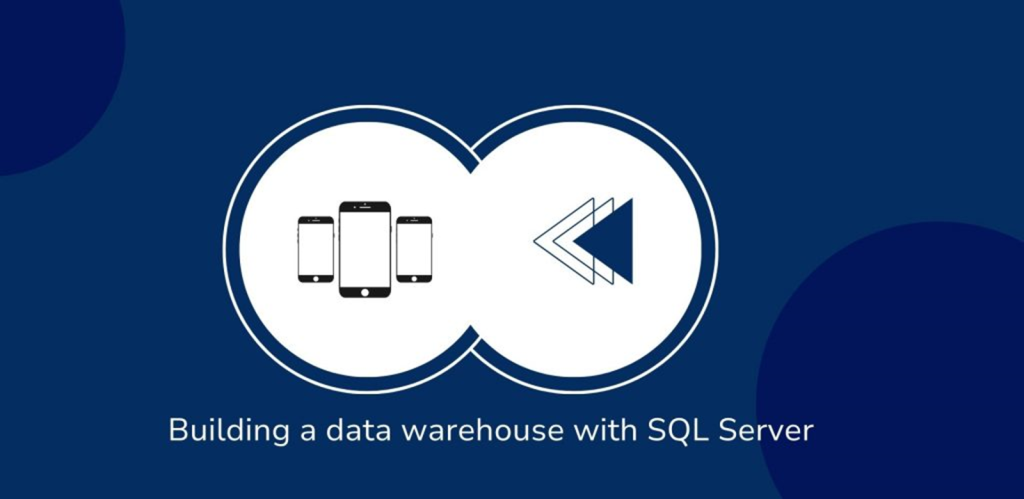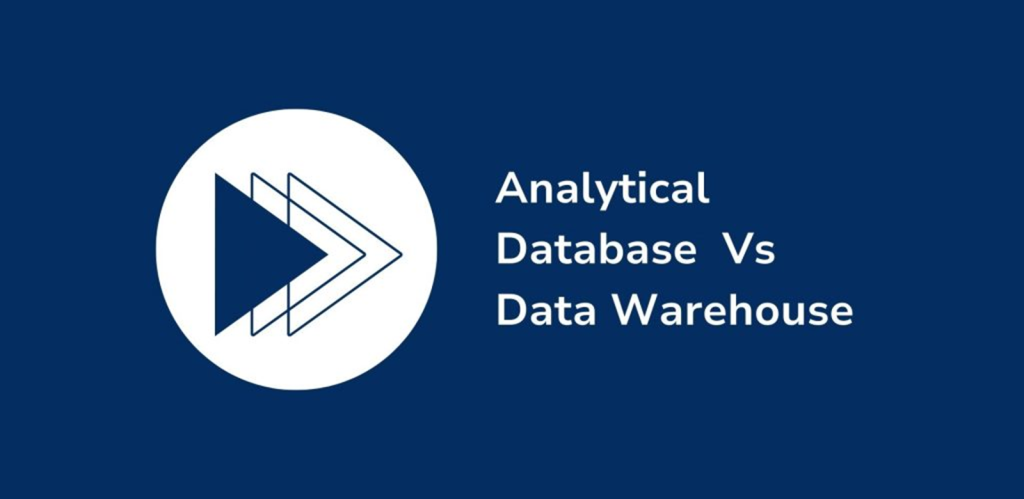In today’s data-driven world, organizations across industries are recognizing the importance of effective data management and analysis. Implementing a data warehouse with Microsoft SQL Server is a powerful solution that allows businesses to consolidate and analyze large volumes of data from various sources, providing valuable insights for decision-making.

In this blog post, we will explore the key steps involved in implementing a data warehouse with Microsoft SQL Server.
- Understanding Data Warehousing
- Planning the Data Warehouse
- Designing the Data Warehouse Schema
- Extract, Transform, Load (ETL) Process of implementing a data warehouse
- Implementing a Data Warehouse
- Optimizing Query Performance
- Security and Access Control for implementing a data warehouse
- Monitoring and Maintenance
- Data Warehouse Implementation Process
Understanding Data Warehousing
Before diving into the implementation process, it’s essential to understand the concept of data warehousing.
A data warehouse is a central repository that stores structured, historical, and transactional data from multiple sources.
The future of data warehouses lies in the cloud data warehouse.
It serves as a single source of truth, enabling businesses to gain a comprehensive view of their data and make informed decisions.
Data warehousing involves data extraction, transformation, and loading (ETL), as well as organizing and optimizing data for efficient analysis.
Planning the Data Warehouse
The first step in implementing a data warehouse is thorough planning.
This involves defining the business goals and objectives that the data warehouse aims to achieve.
It’s important to identify the data sources that will feed into the warehouse, whether they are transactional databases, spreadsheets, external data feeds, or other systems within the organization.
Understanding the data extraction and transformation requirements, as well as considering scalability and future growth, are also crucial aspects of the planning phase.
Designing the Data Warehouse Schema
Once the planning phase is complete, the next step is designing the data warehouse schema.
The schema design determines how data will be organized and structured within the warehouse.
Two commonly used schema designs are the star schema and the snowflake schema.
The star schema consists of a central fact table surrounded by dimension tables, while the snowflake schema further normalizes the dimension tables.
Choosing the appropriate schema design depends on the specific needs and complexities of the data being stored.
Extract, Transform, Load (ETL) Process of implementing a data warehouse
The ETL process is a vital component of implementing a data warehouse.
It involves extracting data from the identified sources, transforming it to meet the requirements of the data warehouse schema, and loading it into the warehouse.
During the extraction phase, data is retrieved from the source systems using various methods such as batch processing or real-time streaming.
The transformation phase involves cleaning and standardizing the data, performing calculations, and applying business rules.
Finally, the loaded data is validated and stored in the data warehouse for analysis.
Implementing a Data Warehouse

With the data warehouse schema and ETL processes in place, it’s time to implement the data warehouse using Microsoft SQL Server.
This involves creating the necessary database and tables within SQL Server, defining relationships and constraints between the tables, and setting up indexing and partitioning strategies for performance optimization.
Views and stored procedures can be created to simplify data access and provide a convenient interface for users.
Once the initial structure is in place, the data warehouse can be populated with the extracted and transformed data.
Optimizing Query Performance
To ensure efficient data analysis, it’s essential to optimize query performance within the data warehouse.
This can be achieved through various techniques such as query optimization, proper indexing strategies, partitioning the data, and utilizing column store indexes for large-scale analytics.
Monitoring and tuning query performance regularly is crucial to maintain optimal performance as the data warehouse grows.
Security and Access Control for implementing a data warehouse
Data security is of utmost importance in a data warehouse environment.
Implementing robust security measures within Microsoft SQL Server is necessary to protect sensitive data.
This includes user authentication and authorization, role-based access control, auditing and compliance features, data encryption and masking, as well as ensuring compliance with data privacy regulations such as GDPR.
Monitoring and Maintenance
Once the data warehouse is implemented, ongoing monitoring and maintenance are necessary to ensure its smooth operation.
This includes monitoring the health of the data warehouse, implementing backup and recovery strategies, performing data archiving and purging as needed, monitoring and tuning query performance, and carrying out regular maintenance tasks to optimize the system.
Data Warehouse Implementation Process
When implementing a Data Warehouse, there are various steps to be followed.
1. Defining the Business Requirements
2. Selecting the Data Warehouse Architecture
3. Choose a Data Warehouse Platform
4. Designing the Data Model
5. Data Extraction, Transformation, and Loading (ETL)
6. Meta Data Management
7. Create Data Marts
8. Implementing Security Measures
9. Performance Tuning
10. Testing
11. Training and Documentation
12. Deployment
13. Maintenance and Monitoring
14. Iterative Enhancements
15. Governance and Compliance
Defining the Business Requirements
It involves a complete understanding of the organization’s goals and stakeholder needs. Here, the engaging key department is pulled together to find the crucial data elements necessary for decision-making.
This initial phase will lay the groundwork for robust and effective data management solutions.
Selecting the Data Warehouse Architecture
This is an important decision in the implementation process. Here, we need to choose the model that aligns with the organizational goals and structure.
There are various models such as Kimball or Inmon. This architecture stage involves an overall framework for data storage, retrieval, and analysis.
Choosing a Data Warehouse Platform
This is so-called the crucial step in the implementation journey. Organizations should evaluate and select the data warehouse platform.
The platform may be on its premises or cloud that suits its technological landscape and business requirements. There are various platforms such as Amazon Redshift, Google Bigquery, and Snowflake that offer highly scalable, high-performance solutions.
Designing the Data Model
Designing the data model involves the creation of a logical structure that mirrors the organization’s data needs. This process will clearly define the dimensions, facts, and relationships shaping effective data storage and analysis.
A well-designed data model will provide a clear roadmap for extracting valuable insights.
Data Extraction, Transformation, and Loading (ETL)
ETL stands for Extraction, Transformation, and Loading which extracts the raw data from the source system, transforms it into a usable format, and loads it into the data warehouse.
This process ensures data accuracy, consistency, and relevance. ETL lays the foundation for the analytics that helps the organization for informed decision-making.
Meta Data Management
Meta Data Management in Data warehouse implementation involves organizing data and documenting data-related information.
This covers all the details of data sources, transformations, and structures that provide a clear understanding of the data’s lineage and meaning.
Create Data Marts
Creating Data Marts is the specialized step for the development of a data warehouse strategy. By structuring the data marts, the Organization can able to enhance the query performance based on the target departments.
In fact, a data mart will serve as a strategic building block for an efficient and actionable data environment.
Implementing Security Measures
Safeguarding the information is a real challenge in the implementation of data warehouses. Incorporating robust security measures will solve this challenge.
A comprehensive security framework helps to fortify the data from encryption to access controls.
A proactive approach to security not only protects the data but also establishes a foundation for reliable and confidential data management.
Performance Tuning
Performance tuning helps to optimize the system for faster and more responsive queries. Fine-tuning the indexes and query structures enhances the overall processing speed.
Data warehousing is a dynamic landscape that requires ongoing performance tuning to ensure optimal functionality and user satisfaction.
Testing
To ensure smoother functioning of the data warehouse, rigorous testing is to happen to validate the accuracy and reliability of the data, ETL process, and query performance.
Regression testing safeguards against any unwanted consequences of the system changes that help to maintain data integrity.
Training and Documentation
Effective training and documentation in data warehouse implementation helps to empower users to navigate and leverage the system efficiently.
Tailored training programs help the users to understand the data access, analysis, and reporting capabilities. Investing in ongoing education and documentation is the key to maximizing the system’s potential and user adoption.
Deployment:
In the Deployment phase, the meticulously developed solutions are moved into the operational phase. This phase involves transferring ETL processes, data models, and analytical tools to the live environment.
Once the deployment is completed, ongoing monitoring and feedback mechanism contributes to continuous improvement.
Maintenance and Monitoring
Maintenance of the data warehouse helps to maintain sustained performance and data integrity. Regular system checks prevent unwanted attacks and issues maintaining the health of data infrastructure.
Continuous monitoring of ETL processes, database performance, and user activities allows issue identification and resolution ensuring long-term success and adaptability.
Iterative Enhancements
The data warehouse can be fine-tuned by collecting user feedback and staying responsive to the changing requirements. The iterative approach enhances the agile data environment providing sustained relevance and value.
Governance and Compliance
Data Governance refers to data ownership, access controls, and audit trails fostering accountability such as GDPR and industry-specific regulations. All these are integrated to safeguard the data in a safe environment.
Conclusion
Implementing a data warehouse with Microsoft SQL Server empowers organizations to efficiently manage and analyze vast amounts of data for better decision-making.
By following the steps outlined in this blog post, including careful planning, thoughtful schema design, robust ETL processes, and optimization techniques, businesses can create a robust and scalable data warehouse solution.
With the power of Microsoft SQL Server, organizations can unlock valuable insights from their data and gain a competitive advantage in today’s data-centric world.
Talk to our experts on the best ways to implement the data warehouse using a Microsoft SQL server.


